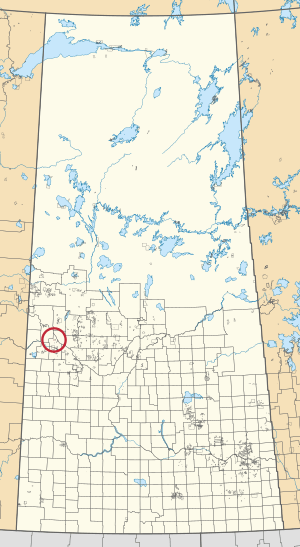Min-a-he-quo-sis 116A facts for kids
Quick facts for kids
Min-a-he-quo-sis 116A
|
|
|---|---|
| Min-a-he-quo-sis Indian Reserve No. 116A | |

Location in Saskatchewan
|
|
| First Nation | Little Pine |
| Country | Canada |
| Province | Saskatchewan |
| Area | |
| • Total | 260.8 ha (644.5 acre) |
Min-a-he-quo-sis 116A is a special area of land in Saskatchewan, Canada. It is known as an Indian reserve. This land belongs to the Little Pine First Nation, who are one of Canada's many Indigenous groups.
Contents
What is Min-a-he-quo-sis 116A?
Min-a-he-quo-sis 116A is a specific piece of land set aside for the Little Pine First Nation. These areas are called "reserves" in Canada. They are places where First Nations people can live and keep their traditions.
Where is This Reserve Located?
This reserve is found in the province of Saskatchewan. Saskatchewan is in the western part of Canada. The reserve is a small but important part of the land for the Little Pine First Nation.
How Big is Min-a-he-quo-sis 116A?
The area of Min-a-he-quo-sis 116A is about 260.8 hectares. To give you an idea, one hectare is roughly the size of a large sports field. So, this reserve is like 260 large sports fields put together.
Who are the Little Pine First Nation?
The Little Pine First Nation is one of many Indigenous groups in Canada. They are part of the Cree people, who have lived in this area for thousands of years. First Nations are the original inhabitants of Canada.
Their History and Culture
The Little Pine First Nation has a rich history and culture. They have their own language, traditions, and ways of life. Their culture often includes strong connections to the land and nature. They pass down stories and knowledge through generations.
How First Nations are Governed
Each First Nation, like the Little Pine First Nation, has its own government. This government is usually led by a Chief and Council. They make decisions for their community. They work to protect their culture and improve life on the reserve.
Life on a First Nation Reserve
Life on a reserve is unique. It blends modern ways with traditional practices. Reserves are places where First Nations people can keep their heritage alive.
Community and Traditions
On reserves, communities often hold cultural events and ceremonies. These events help to teach younger generations about their history. They also celebrate their unique identity. Many people on reserves work to preserve their languages.
Education and Services
Reserves often have their own schools and community centers. These places provide education and services to the people living there. The goal is to support the well-being of the community members.

